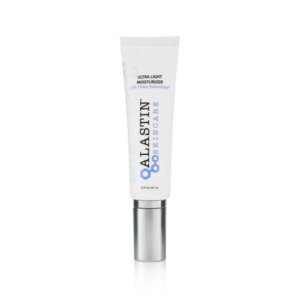In recent years, crepey skin has become a common reason for people to visit their dermatologist. According to Dr. Young McMahan of U.S. Dermatology Partners in Waco, Texas, “Over the past few years, I’ve seen a lot of ‘fad’ treatments that promise to address crepey skin, which has increased interest among my patients in finding cosmetic dermatology solutions for crepey skin that will actually work. The good news is that these effective solutions do actually exist. The bad news is it’s not always as simple as applying a cream, especially for those who have a good amount of skin laxity to contend with. Partnering with a dermatologist instead of relying on DIY treatments or questionable crepey skin products, ensures you’ll find the right solution to achieve the results you’re looking for.” In this blog, Dr. McMahan will explain what causes crepey skin, how it’s treated, and steps you can take right away to prevent crepey skin.
What Is Crepey Skin?
Crepey skin, according to Dr. McMahan, “Is skin that looks like crepe paper. That’s the stuff you buy at party stores to make streamers. Crepey skin has very fine lines and wrinkles that give the skin the appearance and texture similar to crepe paper. Crepey skin may also be thin and saggy.” Crepey skin can happen on any part of the body, but it’s the most common where the skin is already thinner and more fragile. Crepey skin often develops under the eyes and on the neck, upper arms, and inner thighs.
What Are the Causes of Crepey Skin?
While there are many causes of crepey skin, including aging, hormonal changes, dehydration, weight loss, using tobacco, and even stress, Dr. McMahan says, “The main reason people develop crepey skin is prolonged or excessive exposure to sunlight. We often think of sun damage as just causing the effects we see right away – sunburns and suntans, but the long-term and cumulative impact of sun exposure can be much more serious. From increased risk for accelerated aging like fine lines, wrinkles, and crepey skin to more serious concerns like skin cancer, sun damage has potential for serious short and long-term skin health risks.”
Sun damage can lead to crepey skin because it damages skin cells, making it more difficult for the skin to retain moisture, leading to dryer skin which is prone to wrinkling. Additionally, the sun’s ultraviolet (UV) rays are very destructive and can break down collagen and elastin in the skin. These are the proteins that give our skin its smooth, healthy, youthful appearance, so the combination of reduced moisture retention and destruction of the collagen and elastin, leaves skin looking wrinkled and less taught.
How Is Crepey Skin Treated?
According to Dr. McMahan, “If you notice crepey skin developing, you should schedule a visit with your dermatologist as soon as possible. It’s much easier to treat crepey skin in the early stages, but there are effective solutions for the mildest to the most advanced cases, and a dermatologist can help you get your skin looking and feeling its best.”
Some of the treatments that may be provided by your dermatologist at U.S. Dermatology Partners include:
- Retinoids – There are mild retinoid gels and creams available over the counter, but for moderate to advanced crepey skin, you may want to
consider a prescription-strength retinoid to aid in cell turnover. These products should be used in conjunction with a deep moisturizer to reap the exfoliating benefits of retinoids while avoiding excessive dryness.
- Fractional laser treatment – Laser treatments can jump-start cell turnover and encourages the production of collagen and elastin to create a smooth, even skin texture. Brand names available from U.S. Dermatology Partners include:
- Radiofrequency – This technology is used to firm and tighten skin as well as improving skin laxity. U.S. Dermatology Partners offers the following branded radiofrequency treatments:
- Fillers – Not all fillers are effective in addressing crepey skin, but those products that are bio-stimulatory by adding fullness to crepey skin and stimulating collagen production, are effective. These products include:
Can Crepey Skin Be Prevented?
“Absolutely,” Dr. McMahan said when asked about the possibility of preventing crepey skin, “Prevention isn’t just possible; it’s essential. I know you’ve heard this from your dermatologist and other physicians before, but applying an SPF 30 or higher broad-spectrum sunblock every day is one of the easiest ways of preventing crepey skin. Preventing sun damage before it begins is always important to maintain healthy skin, but it’s also beneficial for the appearance and vitality of skin.”
In addition to proper sun care, Dr. McMahan recommends the following steps to prevent crepey skin:
- Talk to a dermatologist – If you notice the first signs of crepey skin or you have family members who struggle with crepey skin, talk to your dermatologist about how you can prevent this condition. Dermatologists can help you find the right skin care and sun protection products to minimize your risk and address concerns in the earliest stages. They will likely recommend daily skin care products that contain anti-aging ingredients like peptides, retinoids, and antioxidants. They may also recommend products with skin-boosting acids, including alpha-hydroxy, salicylic, glycolic, hyaluronic, or lactic acid.
- Stay hydrated – Hydration starts from the inside out. The body will strip moisture from the skin if it’s dehydrated, so make sure you’re drinking plenty of water every day. This keeps all of your cells hydrated and boost skin hydration.
- Eat healthy foods – You can’t consume enough antioxidants in a sitting to completely prevent the signs of aging in the skin, but a lifetime of healthy eating ensures your body has the nutrition it needs to handle all its functions, meaning your skin will receive the necessary nutrients to look its best.
- Moisturize – Even if you’re well-hydrated, your skin’s outer layers still need to be moisturized. Your dermatologist can recommend
a good quality, effective moisturizer for your specific skin type, but look for products that have hyaluronic acid and/or glycerin, which can help moisturize and soften to prevent crepey skin. Make sure to apply moisturizer to your skin once a day. For an added boost, apply moisturizer immediately after getting out of the shower.
Can a Dermatologist Help with My Crepey Skin?
Absolutely. At U.S. Dermatology Partners, we work with people every day who want to improve the appearance of crepey skin. If you want to improve the appearance of your skin or need help managing any other skin health concerns or imperfections, our knowledgeable dermatologists and caring dermatology teams are here to help. Getting started working with U.S. Dermatology Partners is easy. You just need to take a few moments to complete our simple online form. Once we receive your scheduling request, one of our team members will be in touch to finalize the details of your visit.
Find a location near me
or




